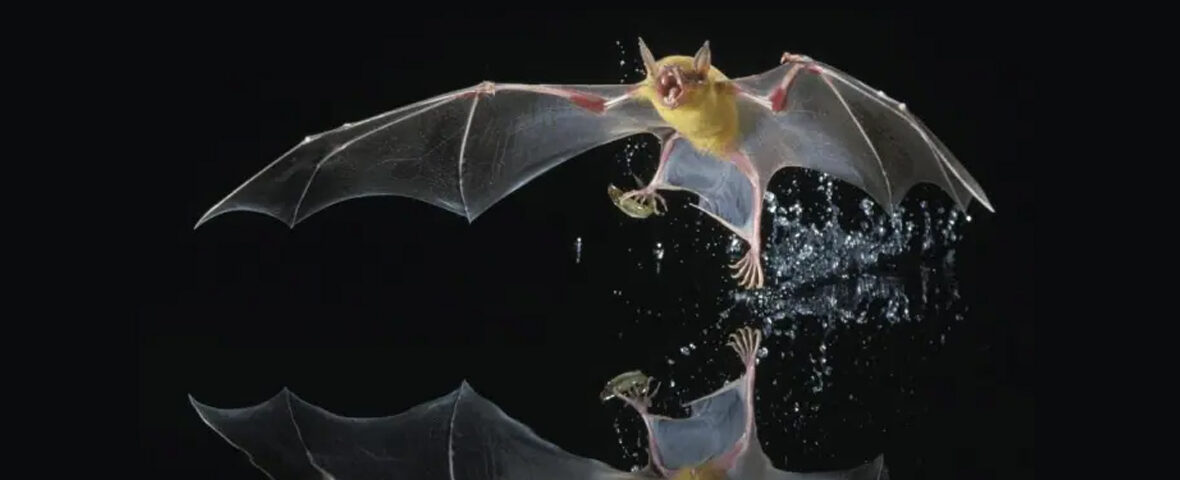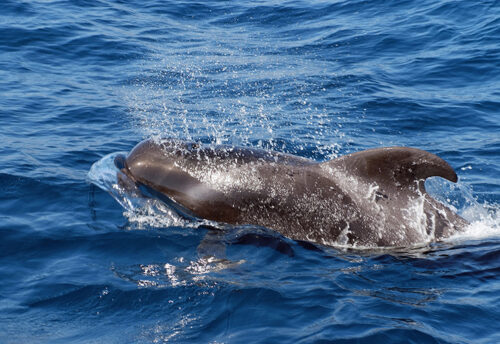
The greater bulldog bat, aka fisherman bat, is among the few species of bat that preys on fish; where other bats prey on insects or feast on fruit, or nectar. These bats can be found throughout Mexico, Central America, and most of South America. Even though they face the threats of fish farmers killing them to protect their fish stocks; reduced water levels in some parts of their ranges; water pollution; and deforestation, these bats are still abundant and listed as Least Concern by the IUCN. Their population trend, however, is unknown.
First the Stats…
Scientific name: Noctilio leporinus
Weight: Up to 3.2 ounces
Length: Up to 5 inches
Wingspan: Up to 27.5 inches
Lifespan: Up to 11.8 years
Now on to the Facts!
1.) These bats use echolocation (a type of sonar) to detect water ripples on the surface of the water. They then hone in and uses the pouch between its legs to scoop up the fish and utilize their sharp claws to capture and hold to it.
2.) They should not to be confused with the lesser bulldog bat, which, although belonging to the same genus, only catches water insects, like water striders and water beetles.
3.) The echolocation sounds emitted by these bats is a higher pitch and up to 55 kHz.
4.) Greater bulldog bats are capable swimmers and use their wings to paddle, when they land in the water.
5.) These critters have prominent cheek pouches which are helpful in holding their food.
But wait, there’s more on the greater bulldog bat!
6.) Their large legs are capable of rotating 180°.
7.) They typically dwell near streams, ponds, estuaries, and coastal lagoons.
Did you know…?
Even though they are adapted to catching and eating fish, during the wet season they also prey on flying insects that they catch on the wing (in mid flight).
8.) These social critters conglomerate into large colonies that number into the hundreds of individuals.
9.) Just like most bat species, bulldog bats are nocturnal (active at night).
10.) During the dry season, these bats will also prey on crabs, shrimp, and scorpions.
But wait, there’s still more on the greater bulldog bat!
11.) The bulldog bat has also been documented searching for fish by dragging its feet across the water’s surface, which is a behavior known as raking.
12.) Breeding season lasts from September – January.
Did you know…?
Fortunately for them, these bats are not subject to contracting the deadly white-nose syndrome.
13.) Females undergo up to a 4 month gestation (pregnancy) that yields a single pup.
14.) The pup is ready to leave the roost in just 1 month.
15.) Both parents tend to the pup until it leaves the roost.
16.) Their flight speed can be up to 40 mph.
Now a Short Greater Bulldog Bat Video!
Be sure to share & comment below! Also, check out the Critter Science YouTube channel. Videos added regularly!
Want to suggest a critter for me to write about? Let me know here.
Some source material acquired from: Wikipedia & IUCN
Photo credit: Reid About Bats



